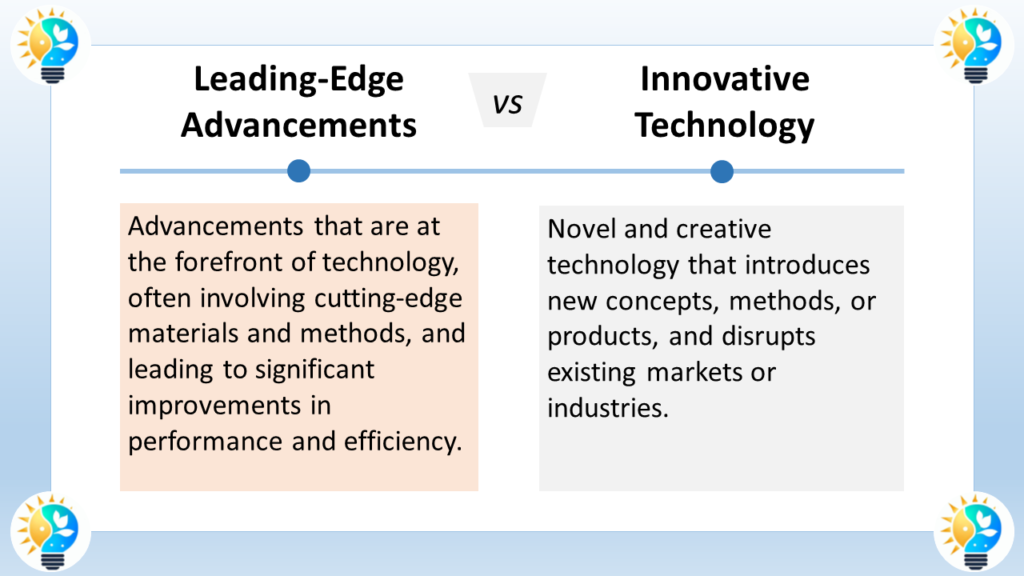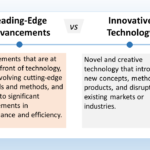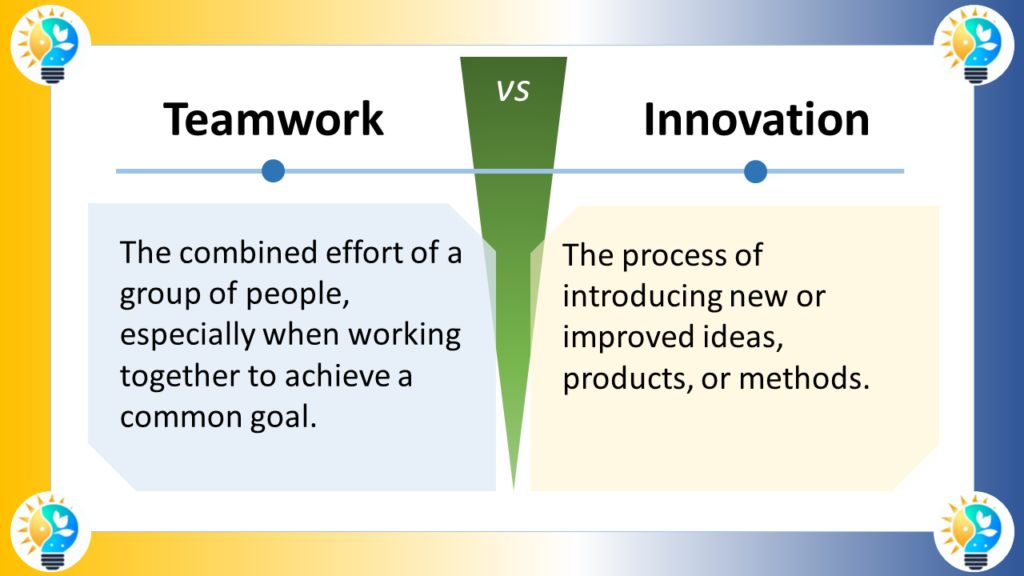Both leading-edge advancements and innovative technology drive progress, but while leading-edge advancements often focus on technological frontiers, innovative technology actively introduces new concepts or methods to enhance performance and efficiency.

In the dynamic world of technology, terms like Innovative Technology and Leading-Edge Advancements are often used to describe the forefront of technological progress. While both indicate forward movement, they differ in their scope and emphasis in the tech landscape.
Definition
Defining Innovative Technology
Innovative Technology refers to the development of new devices, methods, or processes—or significant improvements to existing ones. Its hallmark is novelty and its ability to meet new needs or improve upon current practices.
Characteristics of Innovative Technology
- Novelty: Introduces new ideas or methods to a process or product.
- Improvement: Offers better performance or efficiency compared to what’s currently available.
- Adaptability: Can be integrated into existing systems with relative ease to enhance functionality.
Defining Leading-Edge Advancements
Leading-Edge Advancements are those at the very forefront of technology, pushing the boundaries of what’s currently possible. They represent the latest and most advanced stage of development in a field.
Characteristics of Leading-Edge Advancements
- Pioneering: Represents the most current and advanced stage of development in technology.
- Competitive edge: Provides a significant advantage to those who adopt it early.
- Trendsetting: Often dictates the direction of future developments and industry standards.
Exploring a Variety of Synonyms for Innovative Technology
- Advanced Technology
- Cutting-Edge Innovations
- Cutting-Edge Breakthroughs
- Disruptive Tech
- Emerging Technologies
- Forward-Looking Tech
- Futuristic Innovations
- Groundbreaking Developments
- High-Tech Breakthroughs
- Innovative Breakthroughs
- Inventive Solutions
- Leading-Edge Advancements
- Modern Technological Breakthroughs
- Progressive Advancements
- Next-Generation Technology
- Novel Tech
- Revolutionary Tech
- State-of-the-Art Solutions
- State-of-the-Art Innovations
- Trailblazing Innovations
- Visionary Tech

Innovation is considered as a driving force in progress.
It includes the introduction of novel ideas, methods, or products that bring positive change and advancement.
For more information about innovations, check our glossary
Innovative Technology vs. Leading-Edge Advancements: Relationship and Relevance
While innovative technology can be seen as offering something new or improved, leading-edge advancements are specifically the newest and most advanced options available at a given time. It’s possible for an innovative technology to also be a leading-edge advancement if it is at the forefront of technology when it is introduced.
Contextual Use of the Terms
Businesses implement innovative technology to streamline processes, reduce costs, or offer new capabilities to customers. Companies or individuals looking to be at the forefront of technology will invest in leading-edge advancements to gain a competitive advantage or to pioneer new market segments.
Examples of Utilization
A company that develops a new software platform with enhanced user experience features is employing innovative technology. This platform may offer improvements over existing software but does not necessarily represent the absolute forefront of software technology.
In contrast, the use of artificial intelligence (AI) for real-time, individualized customer interaction might be considered a leading-edge advancement. It is an advanced application of AI that is relatively new to the market and offers a significant competitive edge to early adopters.
Comparison Innovative technology vs leading-edge advancements
Innovative technology and leading-edge advancements are both terms used to describe new and advanced technology. While they are related, there are some differences between the two.
Innovative Technology:
- Innovative technology refers to technology that is characterized by newness, originality, and creativity [1].
- It focuses on introducing new ideas, concepts, or approaches to solve problems or improve existing processes.
- Innovative technology often involves the development of new products, services, or solutions that are different from what currently exists in the market.
- It can involve the use of new materials, techniques, or methodologies to create something unique and groundbreaking.
Leading-Edge Advancements:
- Leading-edge advancements, on the other hand, refer to technology that is at the forefront or cutting edge of what is currently possible [1].
- It represents the latest and most advanced tools, techniques, and platforms available in a particular industry or field.
- Leading-edge advancements are often associated with state-of-the-art technology that pushes the boundaries of what is known and achievable.
- It involves staying ahead of the curve and using the latest technologies to gain a competitive advantage in the market [3].
In summary, while both innovative technology and leading-edge advancements involve new and advanced technology, the main difference lies in their focus. Innovative technology emphasizes newness, originality, and creativity, while leading-edge advancements focus on being at the forefront of what is currently possible [1].
FAQ
Q: Does “leading-edge” imply better quality than “innovative”?
A: Not necessarily. While “leading-edge” implies being at the forefront, it doesn’t always mean better quality. “Innovative” focuses on novelty and usefulness, which can also lead to high quality.
Q: How quickly do leading-edge advancements become mainstream?
A: The rate at which leading-edge advancements become mainstream varies greatly and depends on factors like cost, market readiness, and the speed of subsequent developments.
Q: Can a technology be both innovative and leading-edge?
A: Yes, a technology can be both innovative and leading-edge if it introduces new functionality and is at the forefront of current technological development.
Q: How can businesses keep up with leading-edge advancements?
A: Businesses can keep up by investing in research and development, forming industry partnerships, attending technology conferences, and staying informed through tech news and publications.
Q: Are leading-edge advancements always more expensive?
A: Often, but not always. While they can come with a higher price tag due to their novelty and advanced capabilities, competitive forces and increased production can lead to reduced costs over time.


